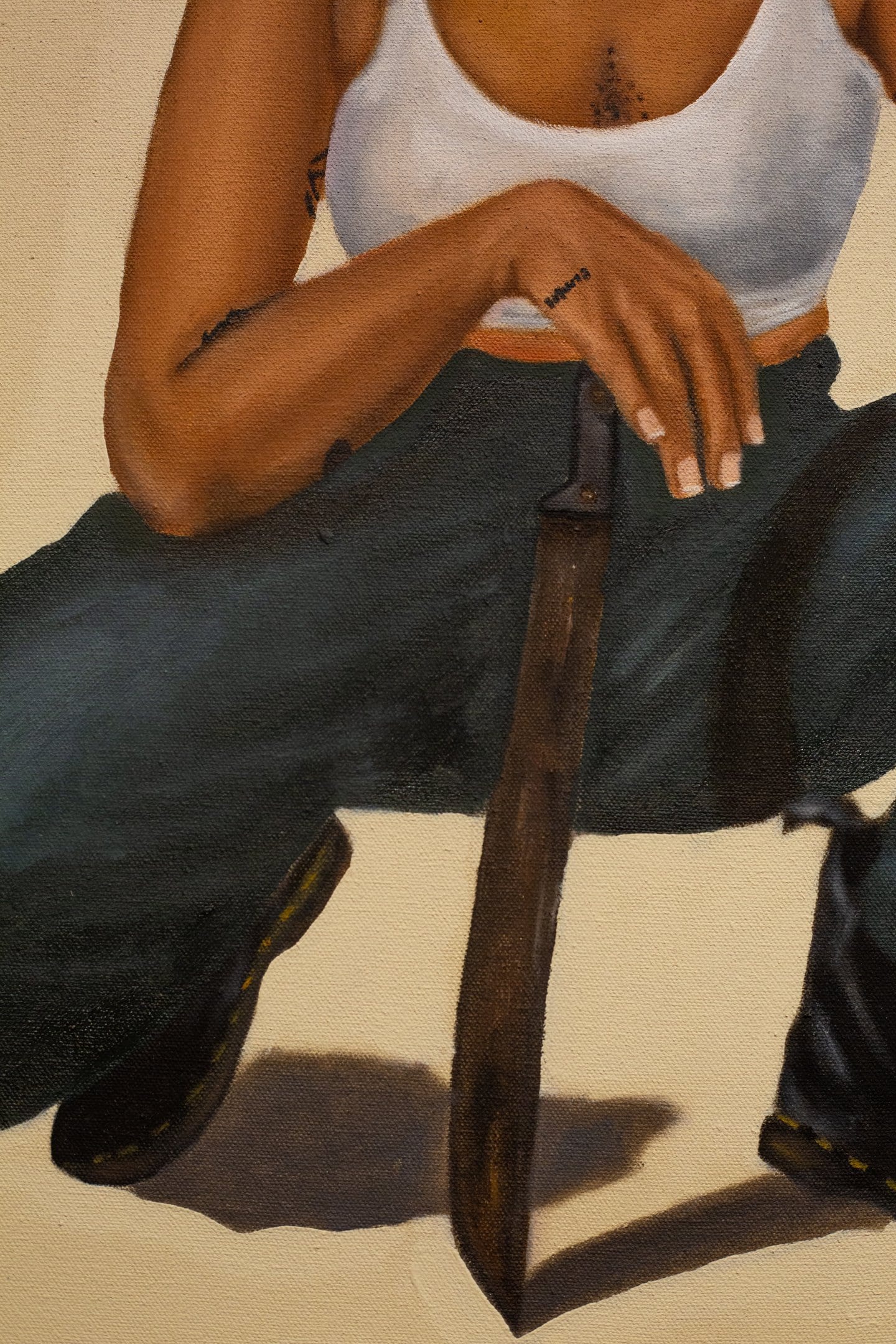Working with materials that range from books and silent film to ink, ashes and musical scores, artists Manon Bellet, Wafaa Bilal, Garrett Bradley, Adriana Corral, Mahmoud Chouki, Zhang Huan, William Kentridge, Shirin Neshat, Edward Spots and Wilmer Wilson IV propose language as a living and ever-evolving document that can counter more staid and static ways of representing our collective pasts. Bodies of Knowledge asks us to consider how we might write more inclusive narratives, reshape public space, and account for bodies and histories that have, in large measure, been written out of them. Bringing a new global perspective to current conversations in New Orleans surrounding cultural preservation and historical memory, Bodies of Knowledge draws together artists working with many different systems of knowledge to illustrate how history can be erased, rewritten and asserted anew.
from the exhibition text accompanying Bodies of Knowledge.
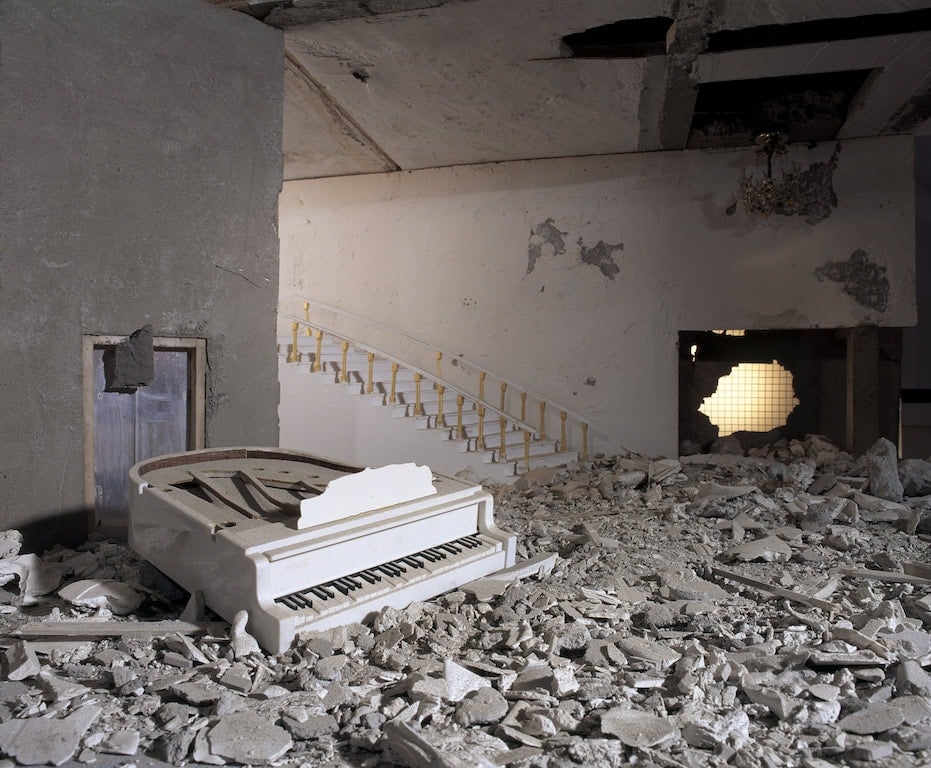
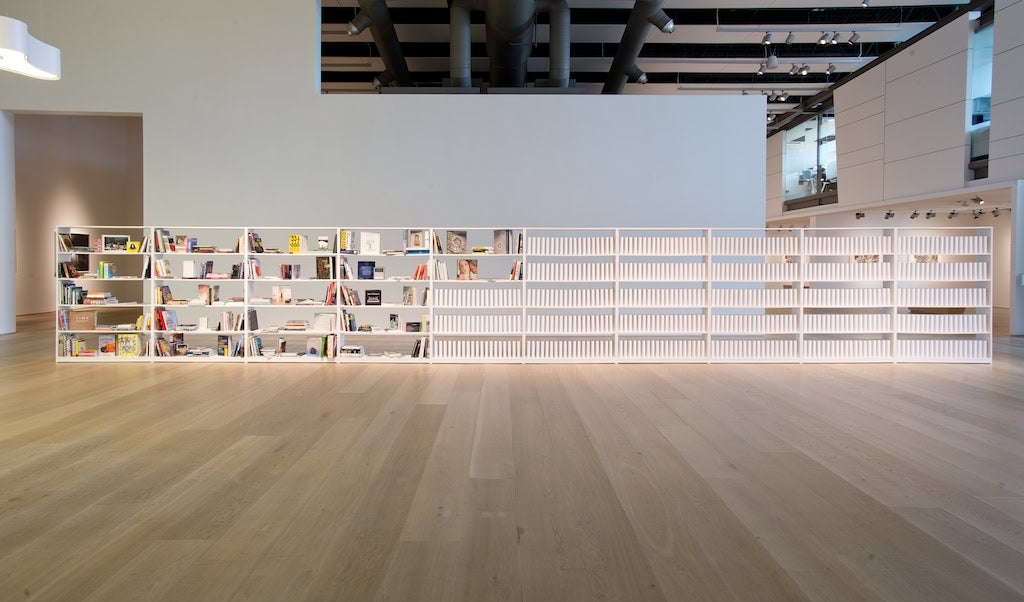
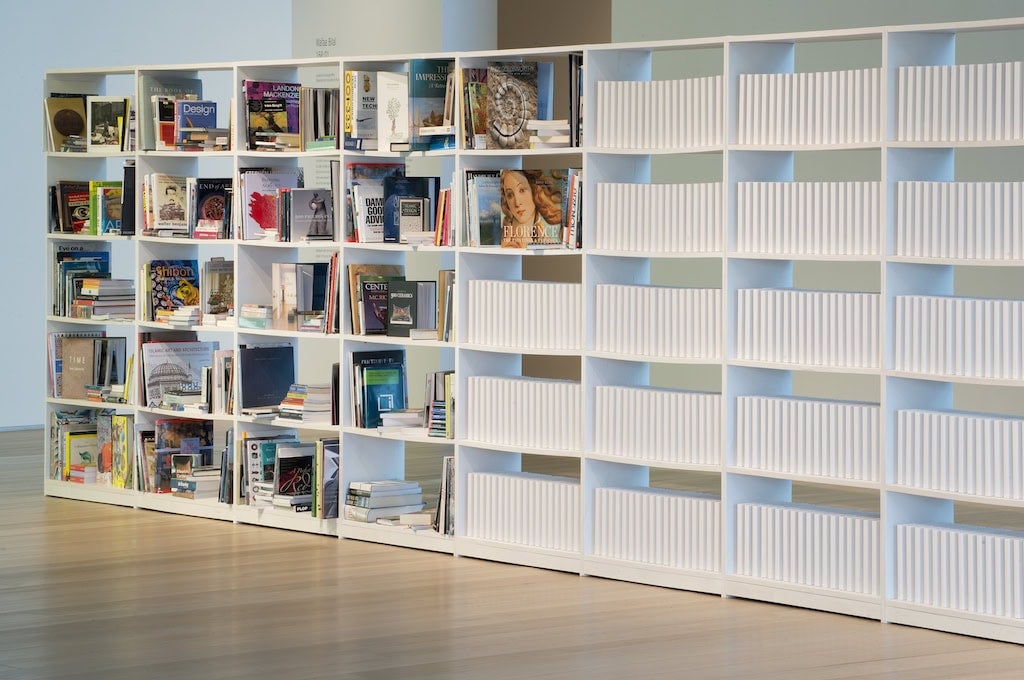
Wafaa Bilal’s site specific installation, 168:01, commemorates the burning of the Baghdad libraries during the 2003 invasion of Iraq, intermingling the images of burning ‘bodies of knowledge’ and the hundreds of thousands of civilian Iraqi men, women and children who died during the course of the war. Their ‘bodies of knowledge’ and what was lost cannot be replaced, where as in the 168:01 installation, he asks the public to replace the austere blankness of the white books with books that will be sent back to the University of Baghdad. The cold severity of the white tablets harkens to tombstones, to death, to the white crosses Americans put on the side of the road to mark casualties of road accidents or locations of mass shootings, a sight that grows more miserably familiar by the day. The act of giving, of participating in the installation gives one competing feelings of complicity, complacency, and compassion, creating a new archival practice of the violence between our countries.
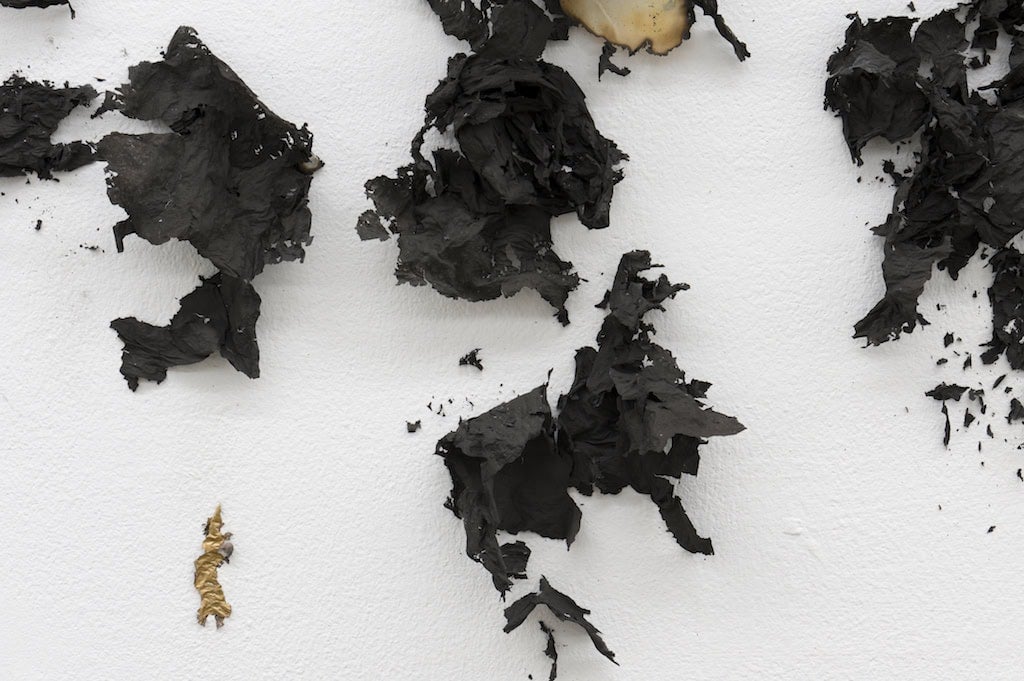
Switzerland, 2011, Photo by Viktor Kolibal © Manon Bellet.
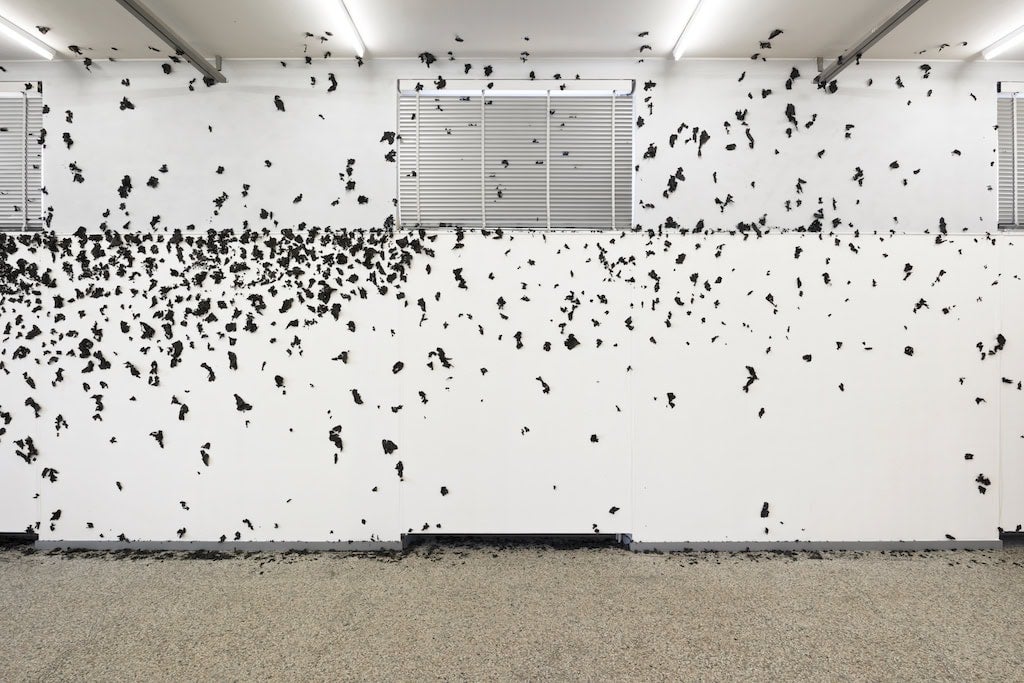
© Manon Bellet
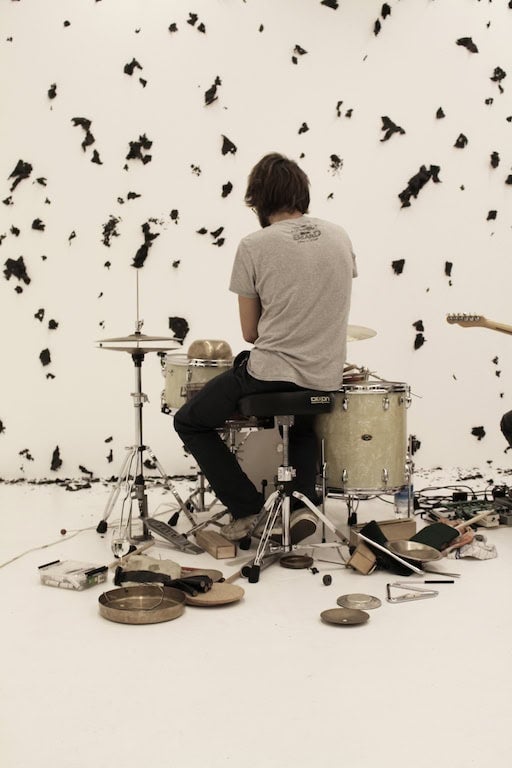
Switzerland, 2011, Photo by Viktor Kolibal © Manon Bellet.
Another participatory installation, Manon Bellet’s Breve braise invites musicians to play instruments in front of ashes of burned paper, one of humanity’s oldest forms of record keeping. The organically generated energy and power of the music — breath, wind, sound — destroys the installation, moves the charred remains of paper, and the act of the destruction is held only in the memories of the people who witness it, who hear the music, who breathe along with those in the space. In New Orleans, a city filled with pride over it’s musical heritage, and in convulsions about what it means to preserve a history and a land that is quickly disappearing, is a difficult conversation, bringing musicians to the front of the effort to preserve and to be preserved.
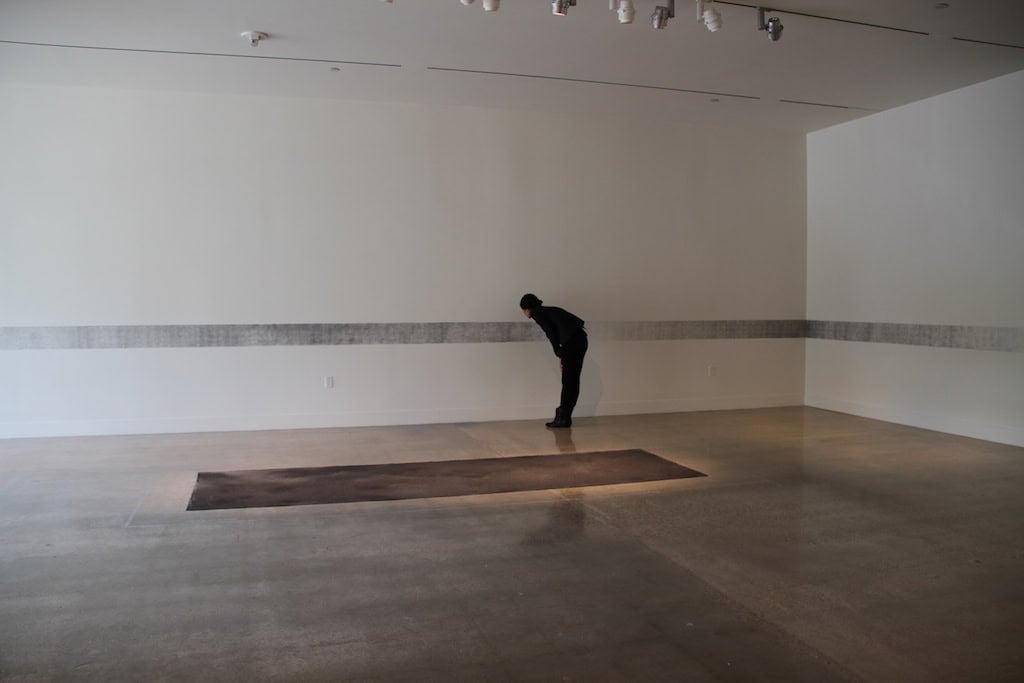
image from the McNay Museum, San Antonio.
The disappearance, murder and rape of the girls and women who live next door in Ciudad Juarez has been happening at rates that one can’t believe since the early days of NAFTA. This disaster continues, unabated, obscured by concerns around issues that bleed into the United States, and arguments about what kind of woman gets counted in the grisly death toll and how. These voices, often men, drown out the hundreds of murders of factory workers, students, and other poor women who work in the shadow economy. It is the same kind of woman who is murdered, and evidence says they even look like each other, slender, darker skin, smooth dark hair. The sheer number of the dead denies any of them their humanity in the abstraction of sheer statistics. Adriana Corral’s Memento, extracts and distills the horror and the scale, adding gravitas to the haunting. In the center of the room, the burial plot, perfectly sized for a woman, lies as an opened wound, shouting loudly with the rankness of it’s bald violence. Around the walls, the names of the thousands of women, murdered, mutilated and tortured, written in ash, created from burned legal documents around each case. Their names fade, grow darker and lighter, forceful, confrontational and desperately trying to speak to us in a language we can hear.
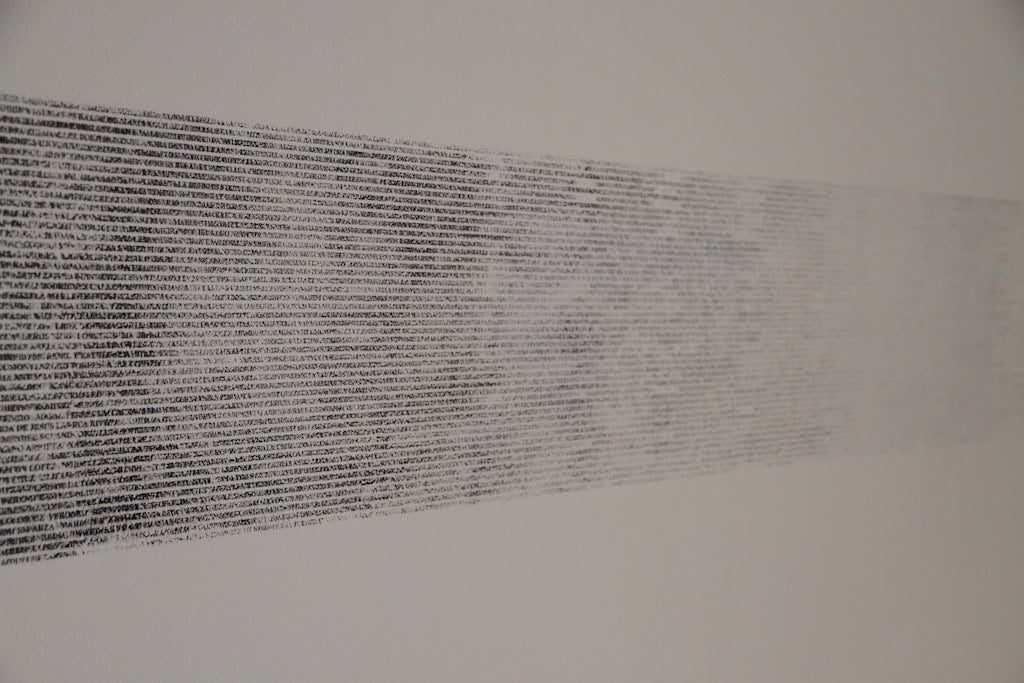
image from the McNay Museum, San Antonio.
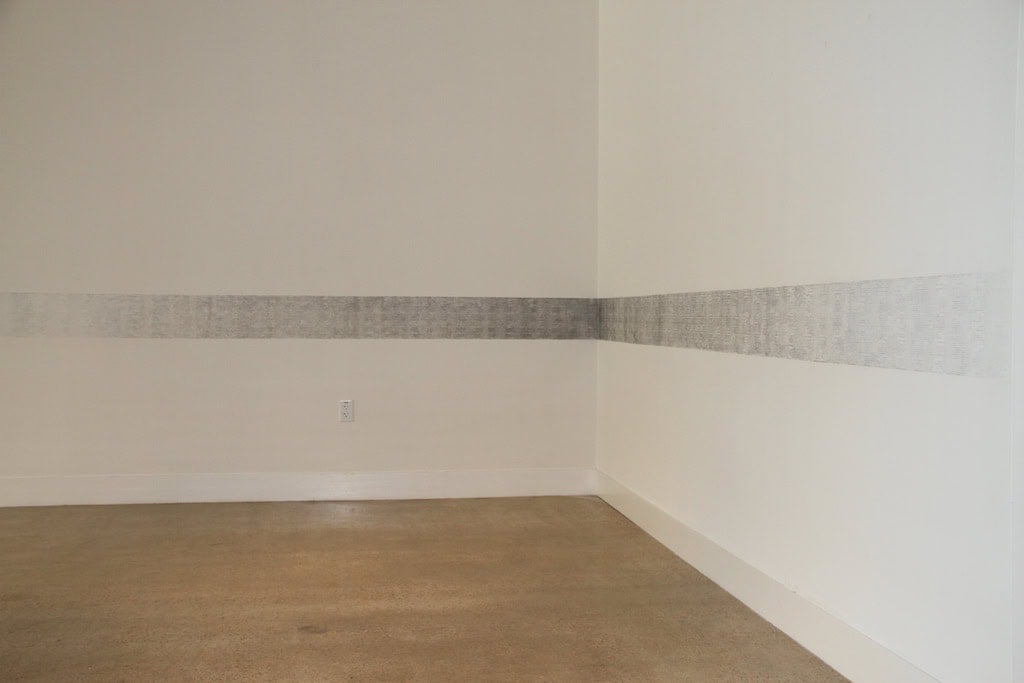
image from the McNay Museum, San Antonio.
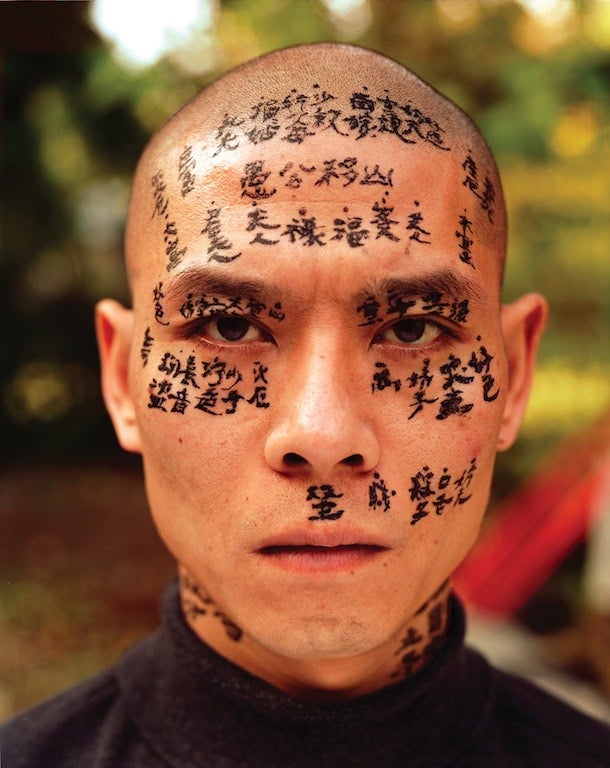
Photograph courtesy Zhang Huan Studio © Zhang Huan, courtesy Pace Gallery.
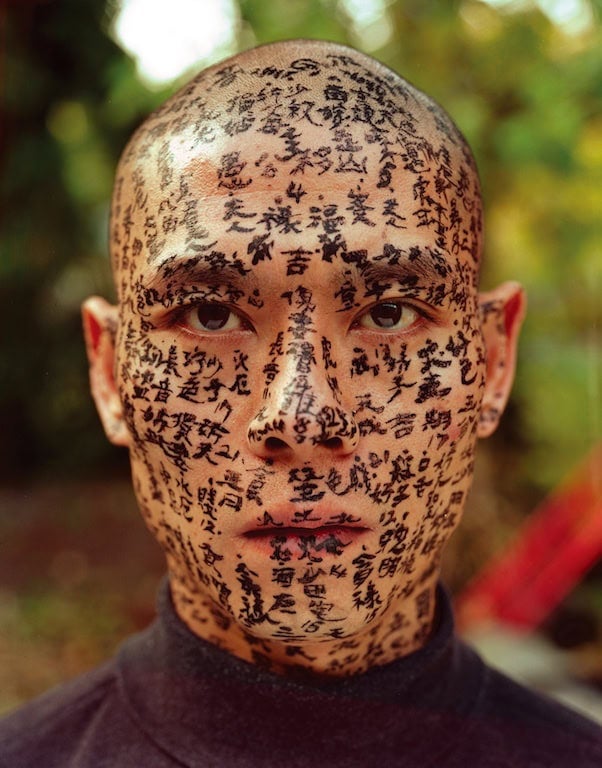
Photograph courtesy Zhang Huan Studio © Zhang Huan, courtesy Pace Gallery.
Zhang Huan’s Family Tree, recorded in large photographs from a performance the artist gave over the course of a day, explores the most traditional form of archive, the family history. Slowly covering himself with names, words, locations and stories from his family, he becomes ever more obscured by his history, leaving no room for his own future to be determined, or any sort of appearance of agency. The weight of such responsibility becomes tangible, asking us to consider what we owe our past and what we owe those who come after us.
Bodies of Knowledge remains on view at the New Orleans Museum of Art through October 13.

